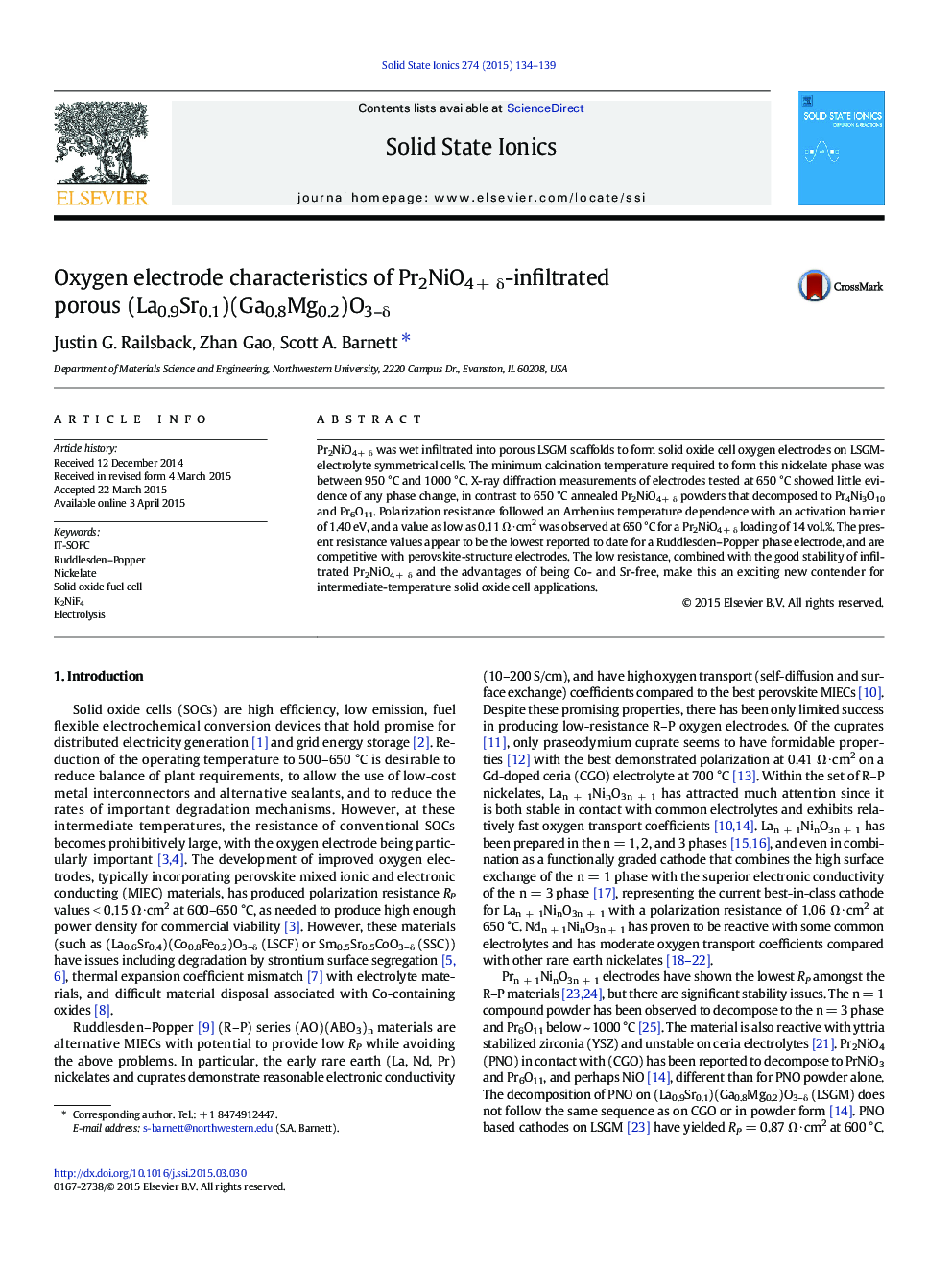| کد مقاله | کد نشریه | سال انتشار | مقاله انگلیسی | نسخه تمام متن |
|---|---|---|---|---|
| 1293630 | 1498269 | 2015 | 6 صفحه PDF | دانلود رایگان |

• First report of infiltrated Pr2NiO4 + δ
• Polarization resistance as low as 0.1 Ω ∙ cm2 at 650 °C
• High performance oxygen electrode is Sr- and Co-free.
• Good stability of the n = 1 phase after 500 h at 650 °C
Pr2NiO4 + δ was wet infiltrated into porous LSGM scaffolds to form solid oxide cell oxygen electrodes on LSGM-electrolyte symmetrical cells. The minimum calcination temperature required to form this nickelate phase was between 950 °C and 1000 °C. X-ray diffraction measurements of electrodes tested at 650 °C showed little evidence of any phase change, in contrast to 650 °C annealed Pr2NiO4 + δ powders that decomposed to Pr4Ni3O10 and Pr6O11. Polarization resistance followed an Arrhenius temperature dependence with an activation barrier of 1.40 eV, and a value as low as 0.11 Ω ∙ cm2 was observed at 650 °C for a Pr2NiO4 + δ loading of 14 vol.%. The present resistance values appear to be the lowest reported to date for a Ruddlesden–Popper phase electrode, and are competitive with perovskite-structure electrodes. The low resistance, combined with the good stability of infiltrated Pr2NiO4 + δ and the advantages of being Co- and Sr-free, make this an exciting new contender for intermediate-temperature solid oxide cell applications.
Journal: Solid State Ionics - Volume 274, June 2015, Pages 134–139